Imagining the Unimaginable at Auschwitz-Birkenau
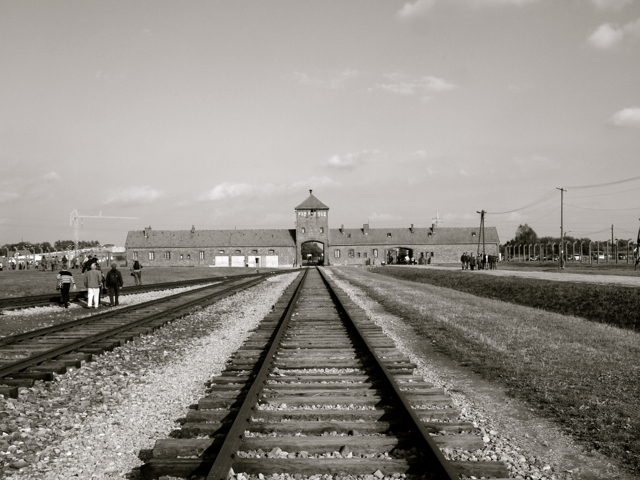
The sun was shining brightly that day in Oświęcim; a chilly but blue-skied September afternoon in southern Poland.
It would have been beautiful — if it hadn't felt so wrong.
The sun isn't supposed to shine at Auschwitz.
As I waited uneasily for my tour of Auschwitz I (the main base camp at the Auschwitz complex) in that bright sun, I secretly willed it to go away. Fluffy clouds and saturated colors just felt wrong in a place that holds so much darkness. But shine away it did, and I found myself realizing that, during the 4 years that Auschwitz operated as a concentration and death camp, there would have been many sunny days. Just like this one.
It was the first thought of many that day that simultaneously chilled my bones and made me want to cry.
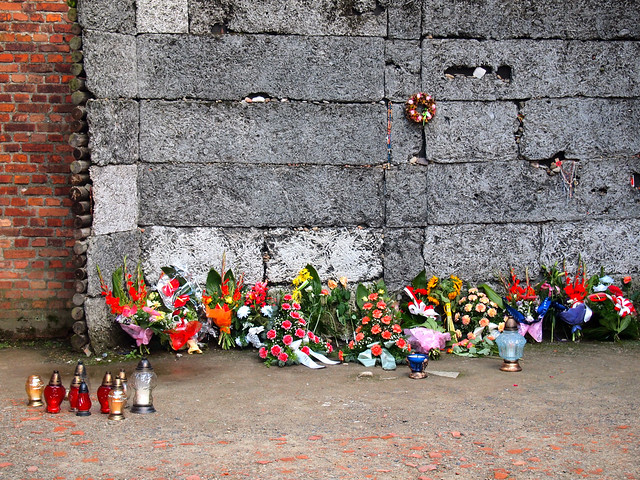
I've been told that understanding the Holocaust and why it happened just isn't possible. “You can't apply normal logic to the Nazis,” a tour guide in Berlin once told me. “If you can understand why the Nazis did what they did… well then I would worry about you.”
And it's true. Imagining what happened at these camps is nearly impossible. How can a person comprehend anything at all while standing in a spot where a million people were murdered for no good reason?
It all just seemed unreal.

At Auschwitz I, you are guided through buildings set up museum-style. Maps. Photos. Prison cells. Stories of people who became numbers. It didn't truly hit me, though, until we got to the part of the camp I just referred to as “The Rooms.”
The Room of Hair. The Room of Abandoned Luggage. The Room of Children's Shoes.
By the time we got to The Room of Children's Clothing (which also displayed haunting photos of skeletal children at Auschwitz), I knew tears were streaming down my face. And yet I could barely feel them. I could barely feel anything.
People often tell you that visiting such a devastatingly dark place makes you feel numb. But I didn't believe it until I experienced it for myself. The lack of logic, sense, or even basic human-ness makes a place like Auschwitz impossible to fully grasp, especially when you are there, staring the reality — and the proof — in the face.
As we exited the museum portion of the complex, our guide told us to take a closer look at the mugshot-style photos that lined the walls. Each showed a prisoner in white-and-black-striped clothing, beneath which was a name, the date the person arrived at the camp, and the date they died.
Very few of them survived at Auschwitz for more than 9 months.
When I took the bus over to Auschwitz II-Birkenau, the numbness continued. As did that infernal sunshine.
It shone down on me as I visited the barracks-style cabins that the prisoners were piled into.
Mocked me as I stood at the end of the railroad tracks where families were rent apart, many headed straight for the gas chambers.
Made me want to cry as I stood staring, soggy-eyed, at the rubble of the massive gas chambers/crematoriums that the Nazis hastily tried to destroy at the end of the war in order to erase evidence of their atrocities.
And did nothing to warm me up as we heard stories of Nazi guards telling prisoners to “remember where you put your clothes and shoes so you can find them after your shower” before ushering them into those gas chambers to kill them with Zyklon B, burn their bodies, and dump the ashes into small ponds nearby.
Numb, numb, numb.
And far too sunny.
In his will, Hitler blamed the whole of WWII — including the Holocaust — on the Jews. On the people he was systematically exterminating. No, there is no logic there; no sense to be made of it. He was a madman who somehow convinced people to follow him.
It's crazy, because, in the beginning, the “Final Solution to the Jewish Problem” did not include murdering anybody. Himmler, Hitler's right-hand man when it came to torture and evil ideas, actually suggested deporting all the “undesirables” to Madagascar. Just get them out of Europe.
But, somewhere along the way, the plans took a dark turn.
It began in 1939 with a program called Aktion T4, which lasted for 2 years and marked the first time in modern history that a government began murdering its own citizens based on what it considered to be genetic inferiority. Aktion T4 focused mostly on mentally ill people in Germany, with doctors “assisting” them in being euthanized. Eventually, though, Hitler turned his sights to gypsies, homosexuals, and especially the Jews.
Hitler came to power in January 1933; by June of that year, he passed laws against Jews holding authoritative jobs and going to schools with others. In 1935, the Nuremberg Laws were passed. These were anti-Semitic laws that set curfews and banned relationships between “Aryans” and “non-Aryans.” In 1938 the Night of Broken Glass took place, during which Jewish shops across Germany were ransacked and Jewish families were chased from their homes.
And then the concentration camps began. Followed not long after by the death camps like Auschwitz.
Auschwitz was actually a complex of 3 separate camps — Auschwitz I (the base camp), Auschwitz II-Birkenau (the extermination camp), and Auschwitz III- Monowitz (a labor camp). Auschwitz I began operation in 1940, with Auschwitz II following the next year. It is this second camp that most people are familiar with.
We all learned about the Holocaust in grade school. We read Anne Frank's diary and Elie Wiesel's “Night.” We heard tales of Hitler and the SS and the horrors that took place at concentration camps across Europe. But when you are actually standing there, in front of ruined gas chambers that took the lives of roughly ONE MILLION people?
That is not something you can learn from a textbook, or comprehend when you are hearing about it from half a world away.
Visiting a place like Auschwitz is not a pleasant experience. I can totally understand those people who will likely never visit a concentration camp because of how depressing they are. BUT, I also feel that visiting places like this — facing the reality of them — is important. It helps us recognize the cruelty inherent in the human race.
And hopefully helps us understand how important it is to never let something like this happen again.
Today, Auschwitz is a listed UNESCO World Heritage Site and also a museum. Visiting the site is meant to be educational, and I highly recommend it if you find yourself in the area.
Opening hours —
- 8:00 AM – 3:00 PM December through February
- 8:00 AM – 4:00 PM March, November
- 8:00 AM – 5:00 PM April, October
- 8:00 AM – 6:00 PM May, September
- 8:00 AM – 7:00 PM June, July, August
Getting there — Auschwitz is located on the outskirts of Oświęcim. It can be reached via train and then bus (or you can always hire a driver from a nearby larger city like Krakow). In between the 2 parts of the camp that visitors can see (Auschwitz I and Auschwitz II-Birkenau) a free shuttle bus runs every 15 minutes or so.
Guided tours — All groups are required to tour the museum part of Auschwitz with a guide, and guides are recommended for individuals, too, especially at Auschwitz I. (I went with a guide, and though the group was quite large, I learned a lot more than I would have had I just been wandering around on my own. Once we got to Auschwitz II-Birkenau, however, I went off on my own.)
Pricing — For any language that isn't Polish, guided tours of the whole site (Auschwitz I and Auschwitz II-Birkenau) run 40 PLN ($13.15 USD) for regular tickets and 30 PLN ($10 USD) for students. There is also a 4 PLN ($1.30) fee for headset rental, which is required for the guided tours of Auschwitz I.
Take your time — It's recommended to allow at least 3-4 hours at Auschwitz (at least 90 minutes apiece for the guided tour of Auschwitz I and visiting Auschwitz II-Birkenau).
Would you ever visit a “dark” place like Auschwitz?
*Thanks to Krakow Tourism, who set up my visit to Auschwitz.

Amanda Williams is the award-winning blogger behind A Dangerous Business Travel Blog. She has traveled to more than 60 countries on 6 continents from her home base in Ohio, specializing in experiential and thoughtful travel through the US, Europe, and rest of the world. Amanda only shares tips based on her personal experiences and places she's actually traveled!

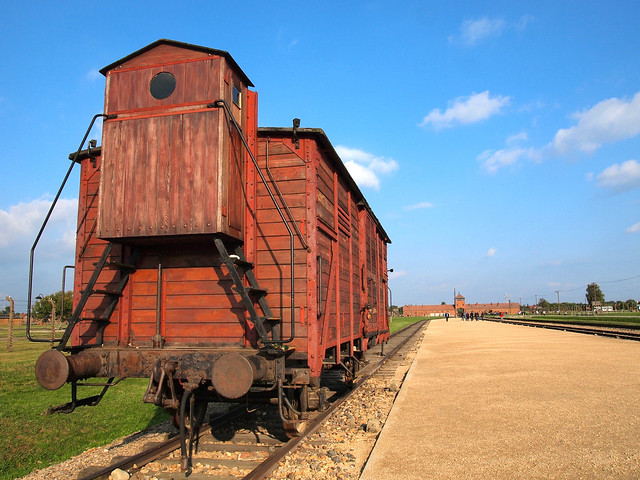
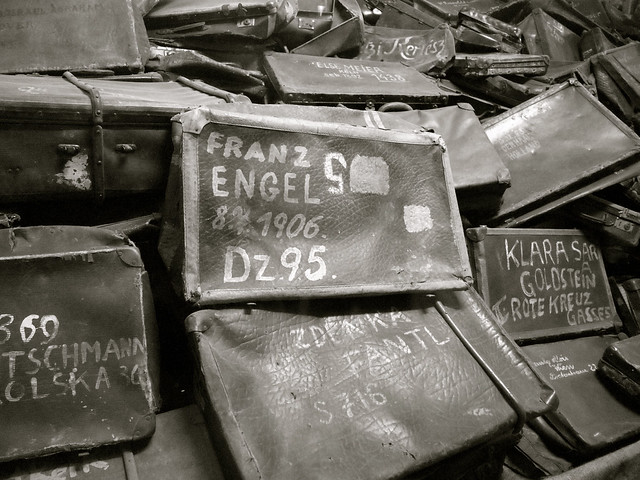
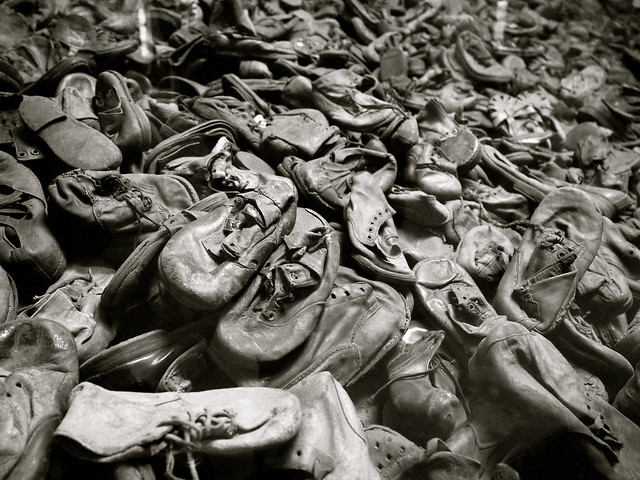


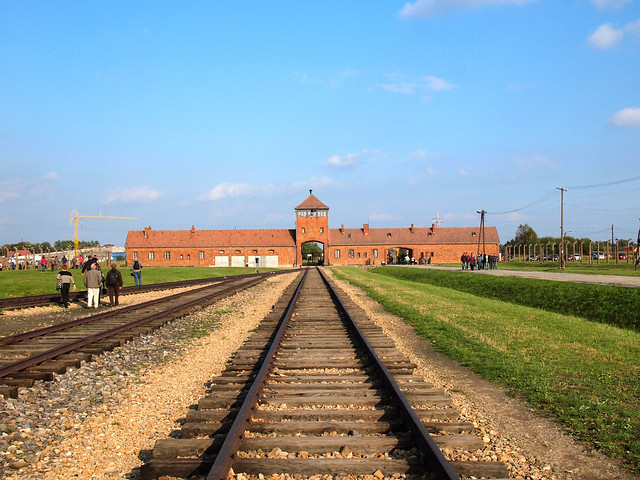
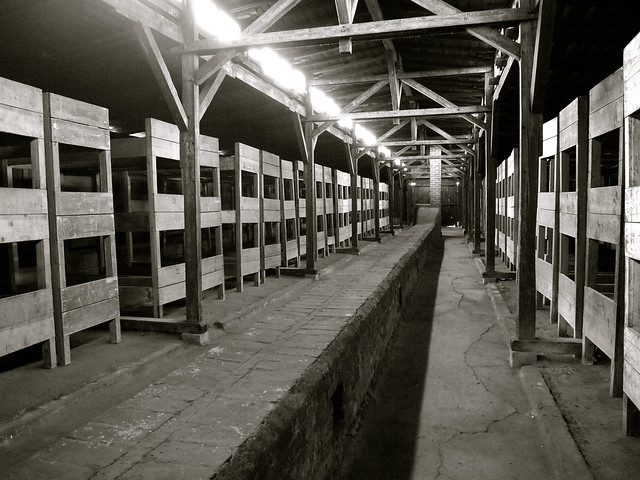

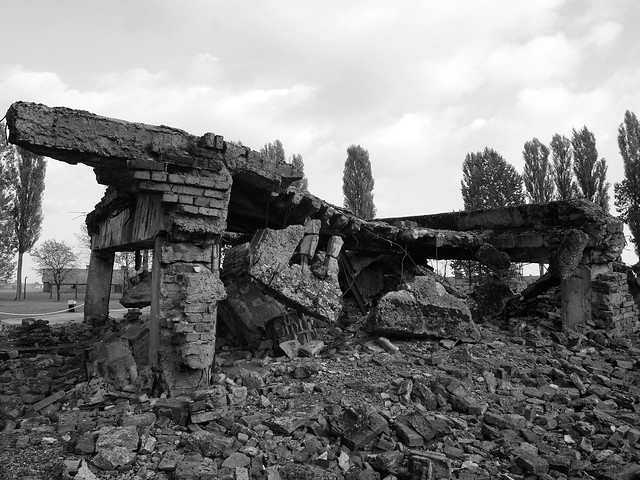
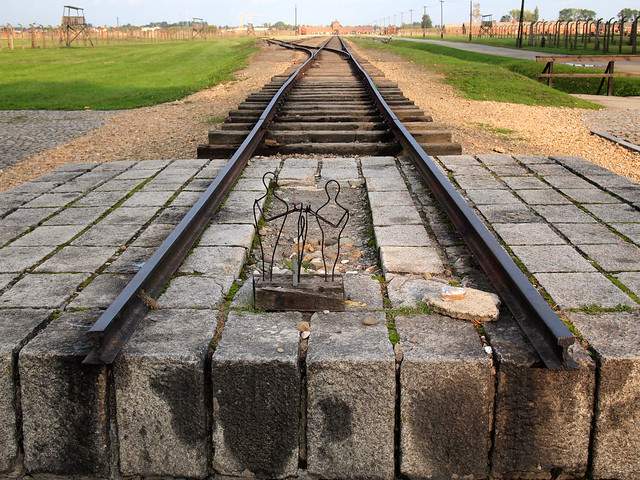
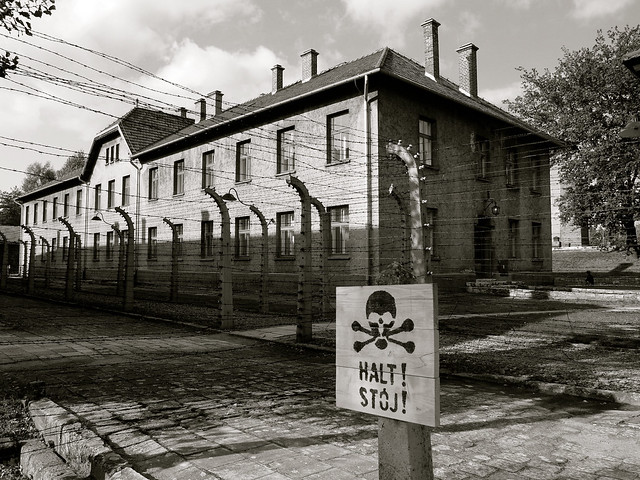

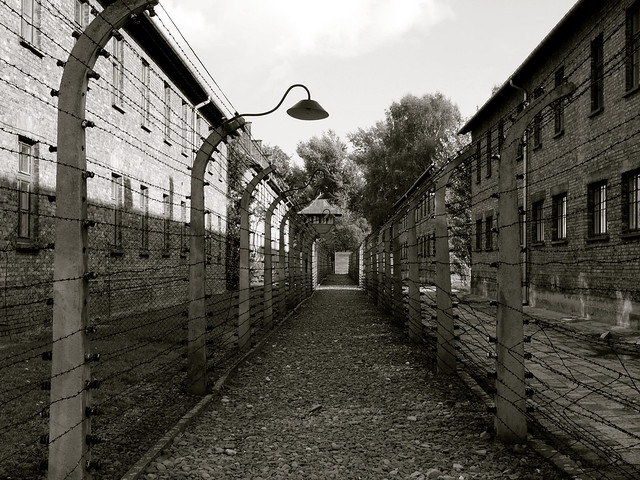
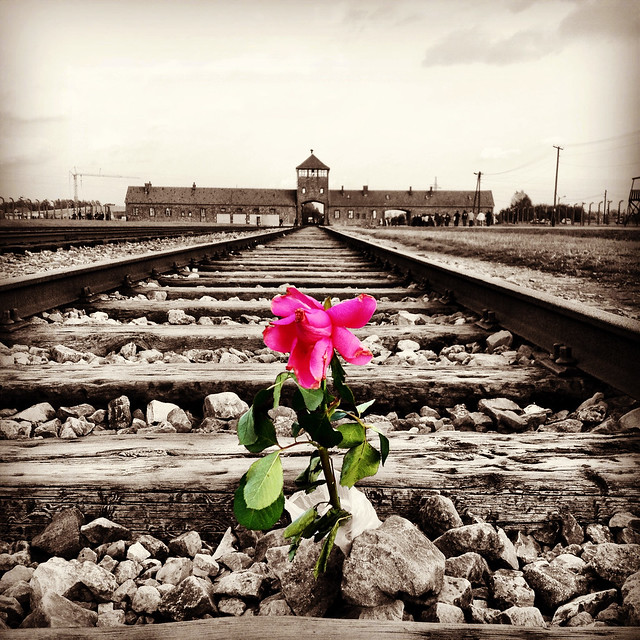









wow! very well written! The camps were a place I wanted to get to but never got to. Reading your article makes me really want to go! its horrifying and sad but I want to feel that to try and understand “the evil” as such. I bet it really makes you appreciate the life you have!
Visiting a place like this certainly does make you count your blessings.
I changed my college major to history after I saw Schindler’s List. What Hitler and the Nazis did is morbidly fascinating and I wanted to understand how this horrible thing happened. A trip to Auschwitz has been on my list since then, but I got the chance to visit Dachau first. I went last December and the weather was “appropriate” where yours was not. It was cold, wet, and gray that day and I wandered around the grounds with tears in my eyes. Definitely a worthy yet emotionally draining experience.
I have a fascination with everything related to WWII and that period of history, too. Like you, I find the Third Reich morbidly fascinating and never skip a chance to learn a bit more about it. Hence why Auschwitz was a must-visit for me. It was so sad, yet so worth it.
I was offered a trip to Dachau when I went to Munich, last year, and I didn’t take the opportunity, but this summer whilst travelling, Auschwitz was part of our trip and I went. Our group had a girl who’s grandparents had been in Auschwitz and she was travelling with friends, and of course it is as horrific as you say. Once we got to the Room of the Hair I was a mess- our guide actually took us outside for a break after that as so many of us were in a mess. I am glad I went, and I think if people have the chance they should go. BUT. I wouldn’t go again, I don’t want to go to another one. It hurt too much. I slept all the way to Krakow after that.
It is such an emotionally draining place. I don’t think I would ever go again either, but I’m glad I went this time.
The visit was indeed heartbreaking. I’d be more than willing to see it again, though.
I honestly don’t know if I could go through it a second time. Though I would probably visit another camp, just to see the comparison.
I also have been to the Holocaust Museum in DC. Tickets can quickly go for the day.
Touring a concentration camp during the winter–that is eerie!
I need to go to that museum one of these days. Though, after museums in Europe and then Auschwitz, I’ve probably had enough dark experiences related to the Holocaust to last me a lifetime.
This is such a dark, chilling and superbly written post. I’ve never been to Auschwitz but reading your article reminded me of my visit to the Tuol Sleng museum in Phnom Penh, Cambodia. The site used to be a security prison, where more than 17,000 people were detained and tortured between 1975 and 1978 before being taken to an extermination camp just outside of the city. Just as you describe at Auschwitz, there were photographs of all those held and tortured there. There was also torture equipment in the stark, empty rooms, and blood stains across the floors and walls, which I assume was so ingrained in that it could never be properly washed out. Difficult, heart-rending facts to believe but important all the same.
That sounds very chilling, too. I’ll be visiting both Tuol Sleng and the Killing Fields in February, and I know both are going to be really hard to visit, just like Auschwitz was.
I went to Auschwitz about ten years ago and I am still haunted by it, especially what you refer to as the Rooms, but I am glad I went. It’s still impossible to properly understand it (and I like the advice your Berlin guide gave) but I feel like it’s important to at least try, and being there physically is probably the best way to do that. Beautiful post about an insane place.
Yes, you’ve summed it up perfectly – it’s impossible to understand, but still really important to try. If only for the sake of those millions of people who lost their lives so senselessly in places like this. Thanks so much for reading.
I think it’s important to visit dark places like this to be able to understand the atrocities that took place. I visited Sachsenhausen in the dead of winter – it definitely adds to the eerie feeling when there’s no one else on the grounds and the wind is howling.
Oh I’ll bet. It was really weird to be at Auschwitz on a nice sunny day.
When I visited Auschwitz this year, there was a horrible howling wind that whipped the dust up into my eyes. I felt compelled to lay my hand on the cattle truck at Auschwitz-Birkenau & felt such overwhelming sadness as I did so – combined with a sense of confusion and anger at how others could lean against the same death transport and pose for selfies… I felt incapable of smiling.
As others have mentioned, “The Rooms” are very hard places to visit; my eyes were tearing up seeing the mountain of human hair and I will also never forget the huge urn filled with the ashes of these poor people.
It was good though to see and walk upon the spot where Rudolph Höss was executed.
Never forget.
I went to Auschwitz when I was 15 and I will never forget it. Your descriptions reminded me of when I was there and the birds were chirping and the sky was a crisp blue, the trees swaying gentle in the wind. And it just didn’t ‘fit’. Such a hard place to describe. Great post in conveying a difficult place to come to terms with.
Thanks, Becki. It definitely IS a tough place to describe. I worked on this post for weeks.
I disagree somewhat with what your Berlin guide said: one of the best ways to defeat evil is in fact to understand the ways of evil, be vigilant of those ways, and educate and warn others of evil. Understanding evil is not the same as being a willing participant. Willful ignorance in the face of evil is irresponsible and opens the door to a very slippery slope to reliving the past; as a species, we’re terribly good at making the same mistakes. Thank you for your post, Amanda.
I totally agree with you, Henry. I think what the guide meant, though, was that, for most people, trying to make *sense* of what Hitler believed is impossible. Yes, we can understand his beliefs and how he convinced people to follow him (as well as the conditions that allowed him to come to power). But its the why that is much tougher to make sense of – simply because it doesn’t MAKE sense to most sane people with a conscience.
I was at Dachau years ago and found it to be overwhelmingly sad. I also visited Yad Vashem when I was in Israel a last year and had tears in my eyes throughout the museum. The fact that all these murderous acts were photographed and videotaped is truly unbelievable. It’s so hard to imagine that something like this could actually happen… As hard as it is to visit sites like this, I think it’s important and very worthwhile.
I think it’s really important, too. We of course can’t even come close to understanding what it would have been like to be in one of these places… but by visiting, we are at least able to learn a little more, and perhaps become a little more compassionate.
I haven’t visited a concentration camp but it’s so moving and difficult to visit other holocaust museums and memorials that I’m sure Auschwitz is so much more so. You’ve done a good job conveying the mood there.
Thanks, Laura. It’s always tough to translate an experience like this into words. But I’m glad you and others feel like I did a good job!
Very well-written post about a very dark place and time in history. We visited the Holocaust Memorial Museum in Washington D.C. and it was difficult – I found it overwhelming. But I agree in that everyone needs to be reminded.
Thank you, Patti. I have not yet visited the Holocaust museum in D.C., but I’ve been to a couple of similar museums/exhibits in Berlin. Those, too, were really difficult to see. But nothing compares to actually going to a camp like this…
I just couldn’t imagine… Seeing the pictures are breaking my heart. I would believe I’d feel numb and angry at humanity at that period of time. I’m sure it left you with a really big purpose inside.
It definitely was a very moving experience. Broke my heart, too.
Yes, I would definitely like to visit Auschwitz and other dark places like it one day. As horrific as it is to read accounts of survivors, watch videos showing live footage or even touring a place like the US Holocaust Museum in DC, I’m sure nothing can prepare you for the magnitude of seeing a place like Auschwitz in person.
Very well written considering the subject.
No, nothing can prepare you to actually go to a place like this. And believe me, I know – I nearly wrote my master’s thesis on “dark tourism” and therefore did a lot of research on Auschwitz and places like it. But none of that helped; being there is so different than just reading about it, or hearing accounts about it from afar.